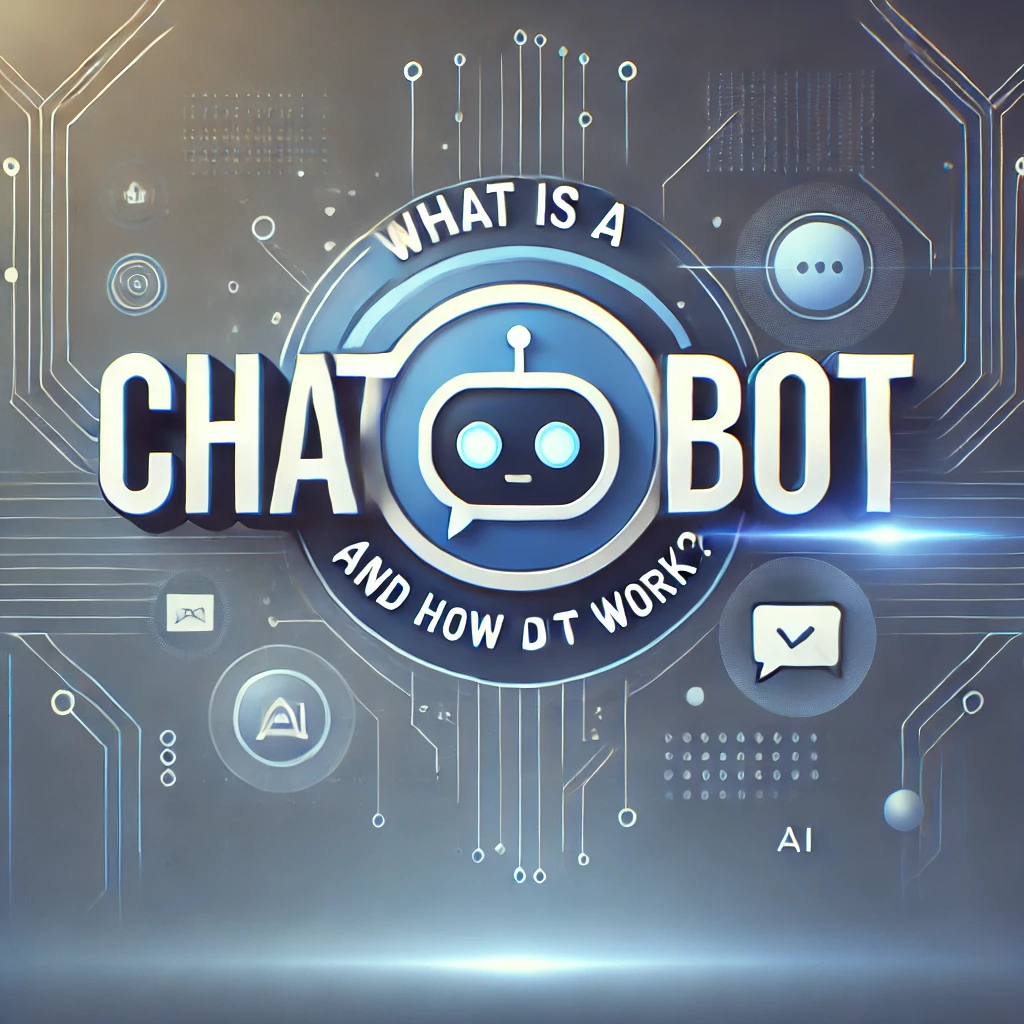In today’s world, AI chatbots are becoming increasingly familiar in many aspects of our lives. You’ve probably interacted with one without even realizing it, whether on a website offering customer support or in an app providing recommendations. But what exactly is a chatbot, and how does it work?
Defining a Chatbot
At its core, a AI chatbot is a computer program designed to simulate human conversation. These bots can be used across various platforms like messaging apps, websites, and mobile applications. They come in different forms, such as simple rule-based bots that follow a predefined script and more complex bots powered by artificial intelligence (AI).
The ultimate goal of a chatbot is to provide quick and relevant responses to user queries, making it easier for businesses and individuals to communicate. We can use them for a range of purposes, such as customer service, sales, and even entertainment. They act as an intermediary between the user and the information or service they need.
How Chatbots Work
A chatbot typically functions through two main types of systems: rule-based and AI-driven. Their inner workings depend largely on the complexity of the system, but all chatbots aim to mimic a conversation flow that feels as human as possible.
Rule-Based Chatbots
These are the most basic forms of chatbots. They operate based on a set of predefined rules and follow specific paths depending on the user’s input. Think of them as decision trees: if a user says “A,” the chatbot responds with “B,” and if the user says “C,” the chatbot responds with “D.” Their logic is very structured, and they are not capable of learning or adapting based on previous interactions.
Rule-based chatbots are effective for simple tasks such as answering frequently asked questions or guiding users through basic processes like booking a service. However, they struggle with complex or ambiguous questions because they rely on strict, pre-programmed scripts.
AI-Powered Chatbots
On the other hand, AI-powered chatbots can handle more complex interactions. They use natural language processing (NLP) to interpret and respond to user inputs more naturally. These bots don’t rely on specific keywords or scripts but instead analyze the meaning and intent behind a user’s message.
AI chatbots, such as those used by platforms like virtual assistants (e.g., Siri or Alexa), are built to learn and evolve. They use machine learning techniques to improve over time by understanding users better with each interaction. Consequently, these bots can answer a broader range of queries, personalize their responses, and adapt to individual preferences.
In particular, these AI-driven chatbots have gained popularity in various industries, such as healthcare, finance, and education, because they offer a more interactive and human-like experience. A notable example is the rise of AI Girlfriend apps, where the chatbots simulate romantic relationships with users, offering companionship in a virtual space. This unique use case highlights the growing versatility and reach of chatbot applications.
How Chatbots Process Language
For chatbots to interact with humans effectively, they need to understand natural language. The key technology that makes this possible is Natural Language Processing (NLP). NLP allows chatbots to interpret, understand, and generate human language in a way that’s meaningful. Here’s how it works:
- Tokenization: The first step in understanding any user input is breaking down the sentence into smaller parts called tokens. This involves dividing a sentence into individual words or phrases.
- Intent Recognition: After tokenization, the chatbot needs to figure out what the user is asking. Is it a question? Is it a command? This process is known as intent recognition. It’s crucial because it determines how the chatbot will respond.
- Entity Recognition: The chatbot will also need to identify key information within the message. For example, if a user says, “I need to book a flight to New York,” the chatbot will recognize “New York” as the destination entity.
- Context Management: In more advanced chatbots, maintaining context over multiple interactions is essential. AI-driven chatbots can remember previous interactions, allowing for more fluid conversations where users don’t have to repeatedly provide the same information.
Once these steps are completed, the chatbot will either retrieve the appropriate response from a predetermined list or generate a new response using machine learning algorithms.
Practical Applications of Chatbots
Chatbots are now widely used across many industries for a variety of purposes. Their versatility allows businesses and individuals to interact more efficiently and effectively. Let’s explore a few practical applications:
Customer Service
One of the most common uses of chatbots is in customer service. Companies integrate chatbots into their websites or apps to assist customers with inquiries, troubleshoot problems, or handle basic requests such as tracking orders. Not only do chatbots provide 24/7 support, but they also free up human agents to focus on more complicated issues.
E-Commerce
Chatbots are also used extensively in e-commerce. They help customers find products, provide recommendations, and assist in completing purchases. For example, a user can ask a chatbot to find “blue sneakers,” and the chatbot will return a selection of products matching the description. These bots can also handle upselling by suggesting complementary items.
Healthcare
In healthcare, chatbots are increasingly being used to provide medical information, schedule appointments, and even offer mental health support. For instance, many apps now offer AI-powered chatbots that can provide general health advice, assist with medication management, or help with mindfulness exercises.
Entertainment
In entertainment, chatbots are used in a wide array of applications. Virtual companions, such as AI Girlfriend apps, offer users a personalized experience, simulating friendship or romantic relationships. These apps highlight how chatbots are not just tools for productivity but also for social interaction and personal engagement.
Benefits and Limitations of Chatbots
Benefits:
- 24/7 Availability: One of the biggest advantages of chatbots is that they can operate round-the-clock, providing users with assistance whenever they need it.
- Cost-Efficiency: Chatbots can handle a large number of queries simultaneously, reducing the need for human agents and lowering operational costs.
- Personalization: AI chatbots can adapt their responses based on a user’s previous interactions, creating a more tailored experience.
Limitations:
- Limited Understanding: While AI chatbots are improving, they still struggle with understanding context or sarcasm in human conversations, sometimes leading to inappropriate or confusing responses.
- Lack of Human Touch: No matter how advanced, chatbots cannot fully replicate the empathy and emotional intelligence that human beings bring to a conversation.
- Security Concerns: Chatbots handling sensitive data, such as financial or medical information, must be secured to prevent data breaches or misuse.
The Future of Chatbots
As technology continues to advance, we can expect chatbots to become even more sophisticated. They will likely evolve into more conversational and human-like assistants, capable of performing more complex tasks and offering more personalized interactions. Not only will we see more chatbots in industries like healthcare, retail, and customer service, but we can also expect new, innovative applications to emerge, perhaps even more tailored to specific needs like AI Girlfriend apps.
Ultimately, chatbots are not just a trend but a growing part of how we interact with technology. As they continue to develop, they will reshape the way we communicate and access services, making everyday tasks more convenient and efficient.



More Stories
Automate Your Dental Clinic using Appointment Systems
Understanding KMSPico: A Comprehensive Overview
Discover the Best Home Security System Deals